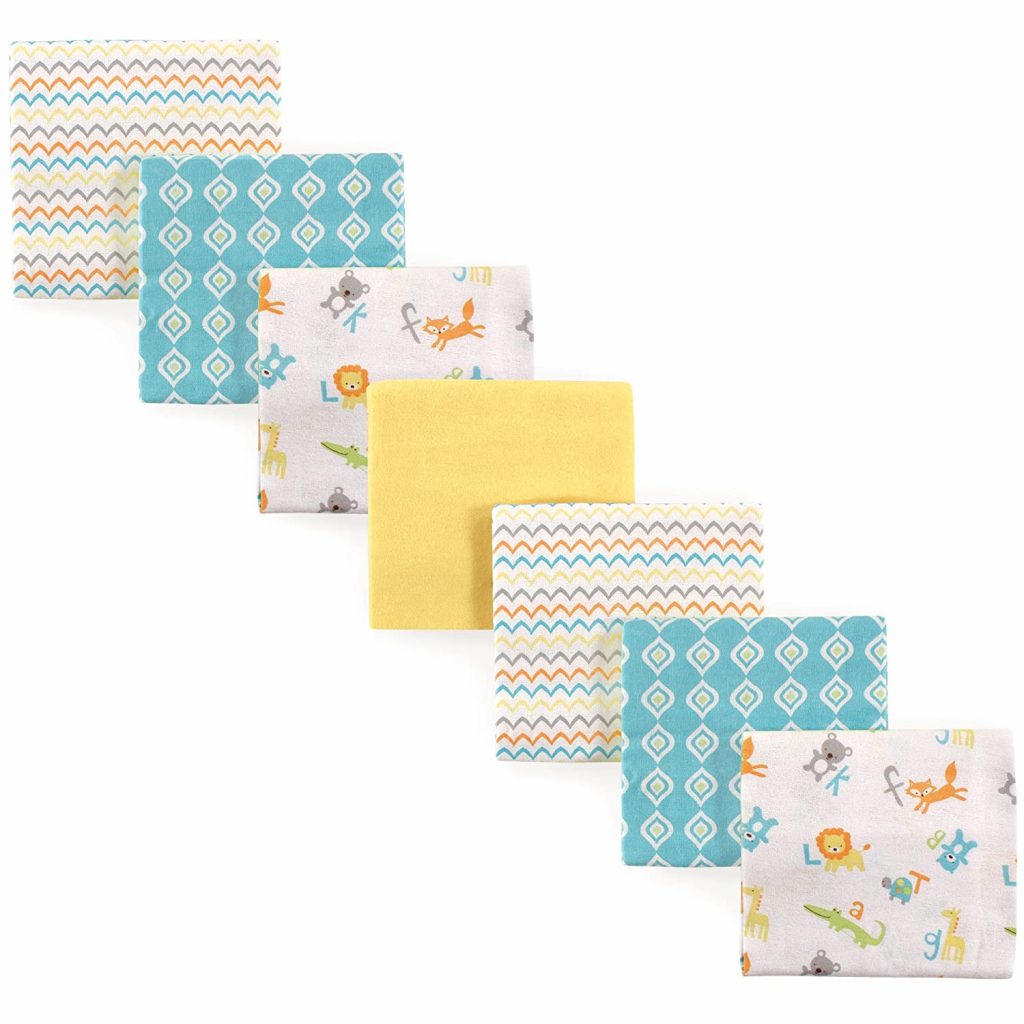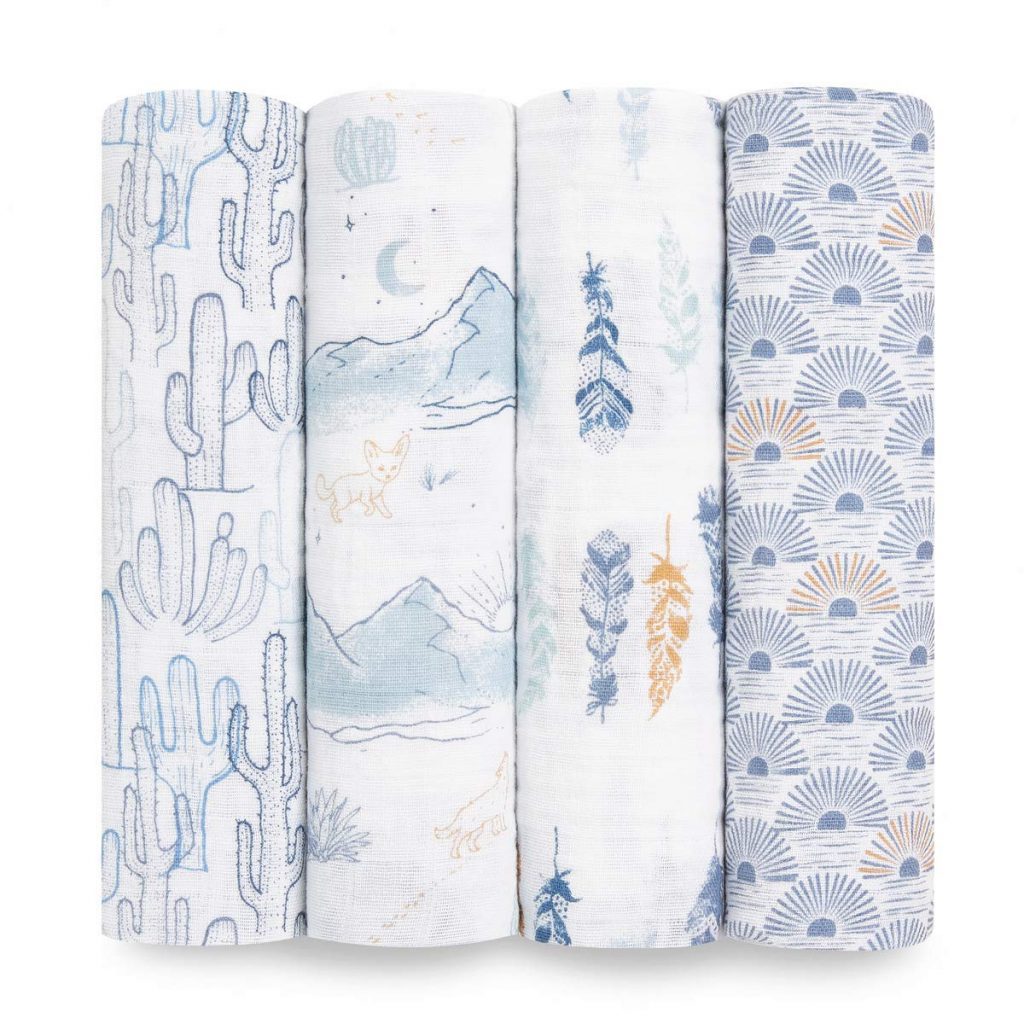Since you’re a new mom, you may be wondering how many receiving blankets to buy and what to do with them. Receiving blankets are among the most versatile items in your baby registry – You can use them for everything from swaddling to making a burp cloth. Here are some tips on using this essential item and which ones to get.
What is a receiving blanket for?
Receiving blankets is a staple in any newborn’s wardrobe. These blankets can be used for swaddling, as a burp cloth, or even as a light blanket in warmer weather. Most importantly, though, you will want to have plenty of them on hand since babies go through them so quickly. How many should you have? As many as possible! You can never have too many receiving blankets.
Pick up at least four or five packs of receiving blankets for starters – that should give you about 20 to 25 blankets. Bring a couple in your hospital bag for when you leave the hospital. Keep a couple in the diaper bag at all times for those sudden diaper blowouts that happen on the go. You should also have an extra two or three receiving blankets ready in your closet or on your changing table; these will become burp cloths since they are so absorbent.
What is the difference between receiving blankets and regular blankets?
Receiving blankets are smaller than traditional baby blankets, lightweight, and easy for newborns to handle. They also contain less stuffing, making them more comfortable for babies to wear. Another good thing about receiving blankets is that they come in many different colors and patterns, giving you a lot of variety.
What is a swaddle blanket?
A swaddle blanket is just like a receiving blanket, except that it has sleeves. The sleeves make it perfect for bundling up your baby to keep them warm and cozy. Swaddles are great for babies aged 0 to 4 months; once they start rolling over and breaking free, you will want to transition out of a swaddle and into using regular blankets. If your baby is still using a swaddle, you should have at least three in the house and another one in your diaper bag.
Can you use a receiving blanket to swaddle?
Yes, you can! The smaller receiving blanket will work well for swaddling if your baby is between sizes. However, once they start rolling over, it’s time to get something more extensive like a regular blanket or a swaddle blanket because babies break free of receiving blankets pretty quickly.
How many receiving blankets do I need?
You should always keep at least four in the house and your diaper bag. If you want to use receiving blankets as burp cloths, you will need two or three extra. You may also want to consider getting some receiving blankets that are reversible; these can be used as a swaddling blanket and a regular blanket once your baby grows out of it.
Receiving blankets are very versatile items, so you will want to have plenty on hand. They are great for swaddling newborns and using as burp cloths or wiping up any mess your baby makes. Ultimately, receiving blankets becomes too tiny as a swaddle blanket for babies once they start rolling over or breaking free, usually around three months.
For that reason, you should have plenty of receiving blankets on hand for your newborn, but once they are ready to transition into regular blankets, it’s time to expand your collection.
Types of Baby Blankets
- Receiving blanket- lightweight, easy to pack in a bag
- Swaddling blanket- lightweight, may contain sleeves for swaddling
- Muslin blanket- lighter than flannel, great for warmer weather, larger than a receiving blanket
- Flannel blanket- warmer than receiving and muslin blankets, thicker, great for colder weather
- Wearable blanket- great for baby to wear in the stroller, keeps them warm but hands-free. Not used as a swaddle because you can’t wrap arms.
- Minky blanket- one side is soft flannel or muslin, and the other is soft Minky material, great for a warmer blanket.
Receiving blanket vs. Muslin blanket
Receiving blanket is thin and small. Primarily used for newborns and can be used to swaddle the baby. Muslin is a light blanket and more significant. They can also be used as a swaddle blanket. Muslin blankets are absorbable, marvelous for lightweight, and easy to use as a nursing cover.
Receiving blanket vs. Swaddling blanket
Receiving blankets can swaddle the baby but do not contain sleeves. Swaddling blankets usually have sleeves attached to wrap the baby and keep their arm explicitly held.
How to use a receiving blanket safely
- Do not put receiving blankets in the crib until the baby is old enough to roll over so they can’t suffocate themselves.
- Please do not use a receiving blanket as a replacement for a crib sheet because it will come untucked and pose a suffocation risk.
- Swaddle your baby in a receiving blanket before putting them to sleep.
How to choose the right receiving blanket for your child
Go for a receiving blanket that is not too small or too big. Go for lightweight, breathable fabric but still warm enough for the seasons you are in. If you are getting a reversible blanket, make sure to put the soft side up because that is the side your baby will be touching all night long.
You can even get special blankets with designs or characters on them to help keep your child happy and excited about sleeping. Go for a receiving blanket with different patterns and colors as other things like burp cloths, nursing covers, stroller covers, etc.
How do you swaddle with a receiving blanket?
- Lay the receiving blanket out flat in a diamond shape.
- Fold the top corner down by about 3-4 inches.
- Lay your baby on top of the blanket so that their shoulder is lined up with the fold you just made.
- Take the right corner side and pull it over their torso, while keeping their right arm tucked at their side and tuck the corner under their left side.
- Take the bottom corner and bring it up over their left shoulder and tuck it behind their shoulder.
- Then take the left corner side and while tucking their left arm at their side wrap it snuggly over their torso and tuck behind them. If their is enough fabric you can bring around and tuck the corner under a fold to secure.
- Make sure they are all swaddled up and covered from neck to toe, but make sure they can still move their legs freely.
Additional Uses for Receiving Blankets
- Use receiving blankets as burp cloths to protect yourself from spit-up, drool, and milk.
- Lay one on the floor for playtime or tummy time.
- Use them as a nursing cover when breastfeeding.
- Use them as a stroller cover to keep the sun out of the baby’s face.
- Help wipe up diaper blowouts when on the go.
- Use them as regular blankets for naps once they outgrow the swaddle stage.
Best Receiving Blankets
Our Pick

Luvable Friends Unisex Baby Cotton Receiving Blankets Bundle
One Size Baby Cotton Flannel Receiving Blankets. The bundle includes seven receiving blankets, all 100% cotton. They measure 30×30 inches. Great for everyday use, soft and gentle on baby’s skin.

Aden + Anais Swaddle Blanket, Muslin Blankets
High-Quality Muslin Blanket 4-pack. Superior breathability, extreme softness, and durability. The large size measuring at 47″x47″ provides your baby with plenty of space to grow. These blankets are made with a thin 1 layer, ensuring comfort and breathability for your little one.

SwaddleDesigns Ultimate Swaddle, X-large Receiving Blanket
Premium soft cotton flannel. Features SwaddleDesigns signature stiching around the blanket and swaddle how to instructions sewn in. Each blanket is 42×42 inches making them perfect for swaddling, tummy time, nursing covers, and more.
FAQ’s for Receiving Blankets
1. Do I need to bring receiving blanket to the hospital?
No, you don’t need to bring your receiving blanket. The hospital provides them for you during your stay in the hospital. You may want to bring your own for the ride home, though.
2. How do I wash my receiving blankets?
It would be best if you washed your receiving blankets in hot water on a delicate cycle and either dried them on low heat or air dry.
3. How many receiving blankets do I need?
Newborns go through eight blankets a week, so you might want to buy 2-3 packs to start your collection with about ten receiving blankets.
4. How big should a baby blanket be?
A typical receiving blanket is around 28 x 28 inches; your baby will grow out of about three months old. Some blankets make a bigger size which is more suitable for infants and toddlers.
5. How will you use blankets for your baby?
You can use blankets for so many things. They are typically great, to begin with, as receiving blankets, but you’ll realize how versatile they are along the way. You can never have too many blankets for a baby. They can be used as tummy time blankets, nursing covers, stroller covers, swaddles, burp cloths, and more.
Conclusion
Receiving blankets are lightweight, breathable, and surprisingly durable. Because they are so versatile in many ways, it’s best to have more than one on hand. Receiving blankets are a must-have for any parent with a newborn. They are perfect for swaddling but can also be used for other purposes like burp cloths, nursing covers, and more.
You will want to buy at least four packs of receiving blankets, so you always have one on hand. Extras are great to keep in the diaper bag or the car, ready to use for anything. You can easily wash and dry them to keep them lasting long.



